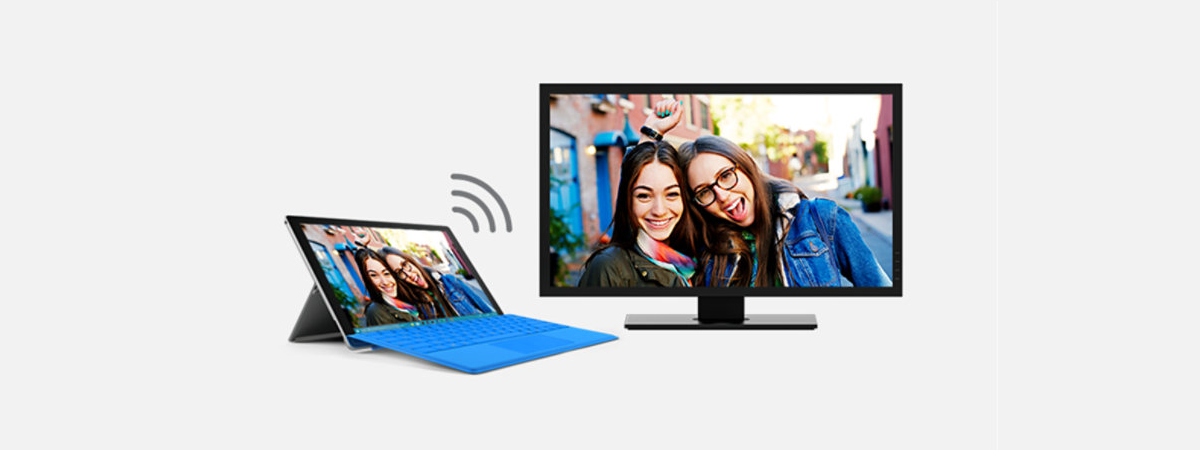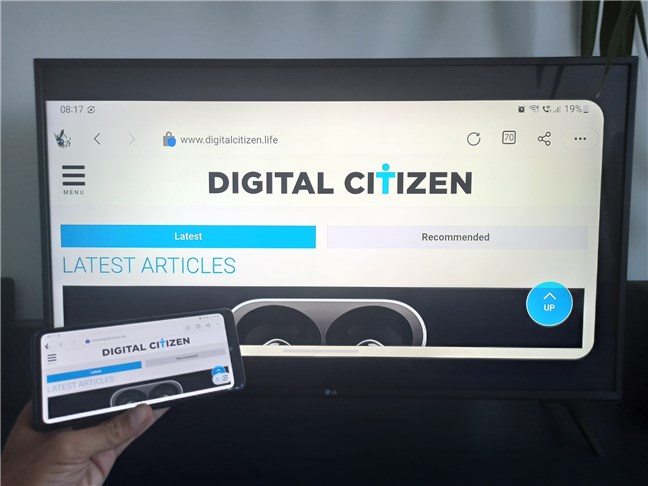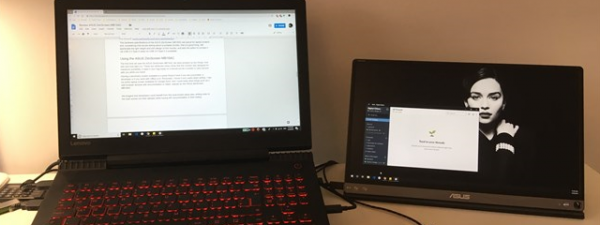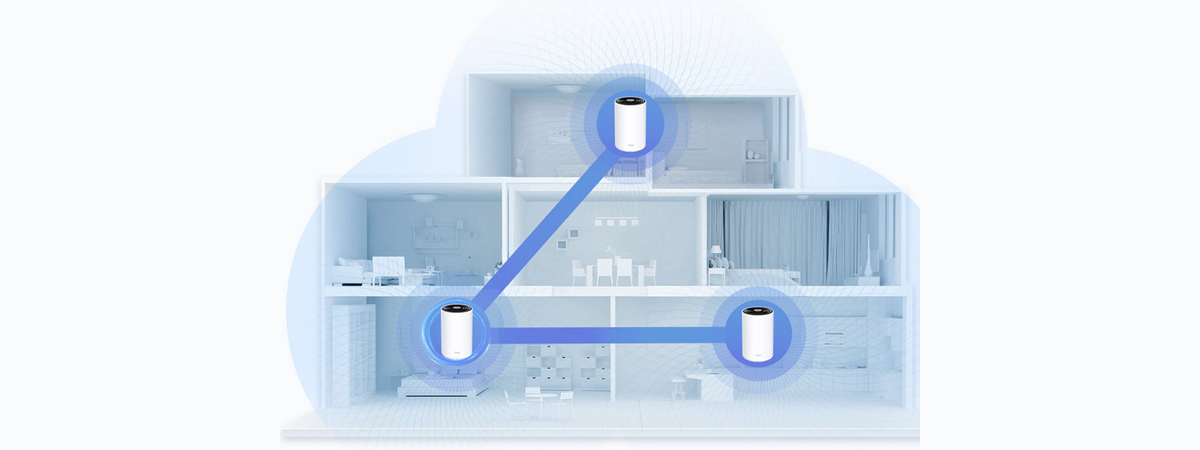
At first, there was the HDMI! Well, not really, but HDMI has been the main way of transmitting video and sound from a device to an external TV or monitor for more than a decade now. However, starting a few years back, a new contender appeared, and its name is Miracast - a technology that promises to let you connect your computers and devices to screens of all kinds, wirelessly and without any special equipment. Miracast is spreading quite fast; even if you may not have heard about it, you likely have at least one device in your home that supports this technology. If you want to know more about Miracast and how it can help you, read on:
What is Miracast, and what does it do?
Miracast is a technology that lets you project wirelessly from your computer, laptop, tablet, or smartphone to an external TV or monitor. This is called screencasting, and it means that Miracast streams your device’s display and sound to the external TV or monitor to which you connected wirelessly. So if the question on your mind is this: “Is Miracast the same as screen mirroring?”, the answer is: Yes, that’s exactly what it is. 🙂
Because it allows you to do basically the same thing as an HDMI cable, which is to transmit video and sound from a device to a display, Miracast is often compared with HDMI. Some people even refer to Miracast as “HDMI over Wi-Fi” or “wireless HDMI.”
Here’s a video created by Wi-Fi Alliance that describes Miracast in a great way:
Wi-Fi Alliance, the worldwide network of companies that takes care of the standards used by our wireless devices, launched a certification program called Wi-Fi CERTIFIED Miracast™ in 2012, and ever since, many consumer electronics manufacturers have adopted this standard. Miracast received a lot of support from Intel in the beginning, probably because Intel already had its Intel WiDi solution even before Miracast was launched. Miracast also has the advantage of not being a proprietary solution, which means that any device from any vendor can become Miracast certified.
How does Miracast work?
Miracast is a standard that relies on WiFi Direct wireless network connections, and it allows your device to stream video to the external display at a maximum of 1080p Full HD resolution and 5.1 surround sound.
This means that Miracast works by creating a direct wireless connection between your device and your external display. Miracast doesn’t rely on your wireless home network. In a way, Miracast works similarly to an ad-hoc network.
In order to connect to the external display, your device creates a wireless network that uses the WPS wireless networking standard (Wi-Fi Protected Setup) and is secured using WPA2, thus making Miracast connections quite safe.
Miracast has one other great feature: it doesn’t care what kind of video or audio you’re streaming from your device to the external display. You can use it to display DRM-protected files, DVD movies, music CDs, and any other kind of media files, regardless of the codecs or formats they use. If you feel that you’d like to learn more about Miracast and all things related to it, check this web page: Wi-Fi Certified Miracast.
On what devices can I use Miracast?
Miracast is a relatively young standard, as it was launched at the end of 2012. However, it has received a great deal of attention from a lot of people and a lot of major tech companies. As such, you can use Miracast on a whole bunch of devices, and more are getting Miracast certified each day.

Mirroring the screen of an Android smartphone on a smart TV
The most important players of the tech world all support Miracast on their devices and/or software:
- Microsoft offers Miracast support in Windows 11 and Windows 10.
- Most Android smartphone and tablet manufacturers offer support for Miracast through customized versions of this standard. For example, Samsung has SmartView, Xiaomi has Cast, Huawei has Wireless Projection, and Oppo has Screencast.
- Many TV manufacturers sell Smart TVs with Miracast support included.
- If your TV or external monitor doesn’t support Miracast, you can buy a Miracast adapter that connects via the display’s HDMI or USB port and brings Miracast capability. There are many options to choose from. Still, we’d recommend choosing one that’s already been tried and tested by other people, like a Microsoft Wireless Display Adapter v2 or a Belkin Miracast Video Adapter.
Unfortunately, Google doesn’t include built-in support for Miracast in Android. That means that, unless your smartphone manufacturer made its own implementation of the Miracast standard, you can’t use it. Furthermore, that also means that none of the recent versions of Google smartphones has Miracast support. Although Miracast was supported in Android 4.2 Jelly Bean and following versions, Google removed it in Android 7 and later. That probably had to do with the fact that the company wanted to promote its own Chromecast technology.
Similarly, Apple doesn’t support Miracast on iPhones, iPads, or Macs either. Instead, the company promotes its own method of screen mirroring: AirPlay. You can read more about that on Wikipedia here: Apple AirPlay.
How do you use Miracast?
Connecting your devices to your external displays using Miracast is easy and fast, but it’s also a different process on each platform and operating system. If you need help with that, we have a few tutorials ready for you:
- For Windows 11 computers and laptops, read: How to wirelessly connect and project to a TV from Windows 11
- For Windows 10 devices, read: How to wirelessly connect and project to a TV from Windows 10
- For Android smartphones and other devices, read How to wirelessly mirror the screen of your Android on a TV
The pros and cons of the Miracast technology
There are plenty of advantages to using the Miracast technology, so there’s a big chance that it’ll be adopted by more people and companies in the near future. Here are some of them:
- Miracast helps you get rid of cables and connect wirelessly.
- Miracast connections between devices are easy to set up.
- You don’t have to have HDMI ports on your smartphone or tablet in order to be able to use an external display with them.
- You don’t need to have a working wireless network in your house. You don’t even have to have a router.
- You can take your Miracast dongle with you when you travel, and you can use it to cast video from your smartphone, tablet, or laptop to any TV or display with an HDMI or a USB port, depending on the dongle you use.
Like everything else in life, Miracast also comes with its disadvantages. Here are some of the most important:
- Stability issues - although Miracast certified devices are designed and created to connect quickly and easily, some Miracast connections are unreliable. It depends a lot on the quality of the devices you are using for Miracast connections.
- Latency is not standardized for Miracast - that means that you might see lags between what’s on your Miracast transmitting device and your external Miracast receiving display. For instance, if you want to play your favorite action game on your smartphone while connected to a large screen TV, the video or the audio might not be in sync with your actions. Again, it depends a lot on the quality of the devices you are using for Miracast connections.
- It offers only display mirroring - Google’s Chromecast and Apple’s AirPlay technologies are slightly better because they allow multitasking, not just screen mirroring. While using any of the two, you can cast a movie on your TV, for example, and continue using your smartphone for other things like endlessly scrolling on Facebook, for instance. Using Miracast, you can’t do that: what’s on your smartphone’s screen is always duplicated on the TV screen.
What devices support Miracast?
When publishing this article, in 2022, there were over 12000 Miracast-certified devices in the world. If you want to check whether a certain device you own or want to buy is Miracast certified, you can do that with a simple search on the official Wi-Fi Alliance website here: Product Finder.
Are you using Miracast for screen mirroring?
Miracast is a great technology, and it can greatly change the way we interact with the screens around us. Imagine that each and every display in your home is connected wirelessly to whatever device sends it video and/or sound. And imagine that you can connect your smartphone or tablet to any TV close to you. If Miracast continues to get better and is adopted more widely, it could replace our need for cables when connecting to displays of all kinds. What do you think of this technology? Do you use it? What is your prediction when it comes to Miracast and its evolution? Comment below, and let’s discuss.






